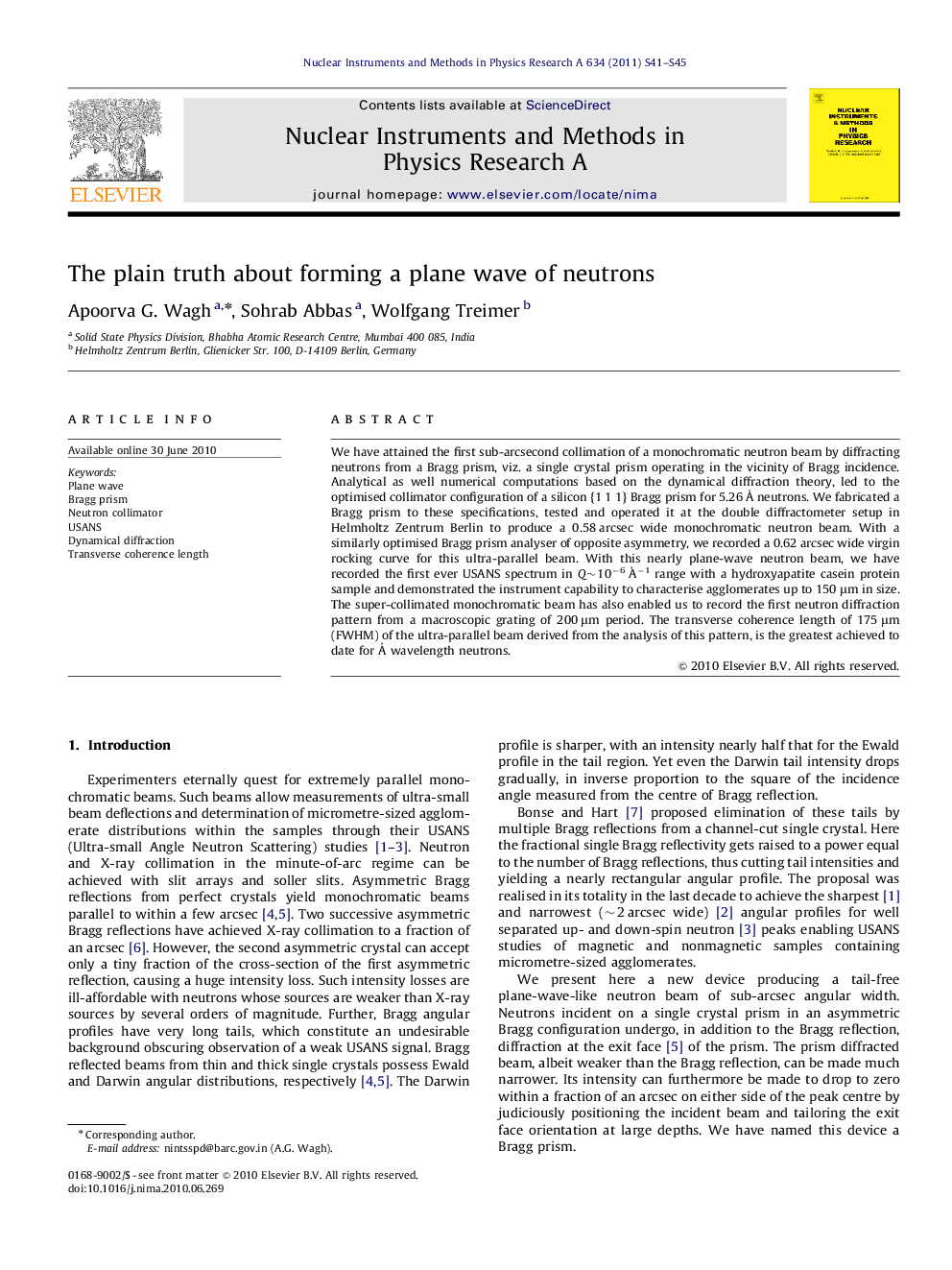| Article ID | Journal | Published Year | Pages | File Type |
|---|---|---|---|---|
| 10715792 | Nuclear Instruments and Methods in Physics Research Section A: Accelerators, Spectrometers, Detectors and Associated Equipment | 2011 | 5 Pages |
Abstract
We have attained the first sub-arcsecond collimation of a monochromatic neutron beam by diffracting neutrons from a Bragg prism, viz. a single crystal prism operating in the vicinity of Bragg incidence. Analytical as well numerical computations based on the dynamical diffraction theory, led to the optimised collimator configuration of a silicon {1Â 1Â 1} Bragg prism for 5.26Â Ã
neutrons. We fabricated a Bragg prism to these specifications, tested and operated it at the double diffractometer setup in Helmholtz Zentrum Berlin to produce a 0.58Â arcsec wide monochromatic neutron beam. With a similarly optimised Bragg prism analyser of opposite asymmetry, we recorded a 0.62Â arcsec wide virgin rocking curve for this ultra-parallel beam. With this nearly plane-wave neutron beam, we have recorded the first ever USANS spectrum in Qâ¼10â6Â Ã
â1 range with a hydroxyapatite casein protein sample and demonstrated the instrument capability to characterise agglomerates up to 150 μm in size. The super-collimated monochromatic beam has also enabled us to record the first neutron diffraction pattern from a macroscopic grating of 200 μm period. The transverse coherence length of 175 μm (FWHM) of the ultra-parallel beam derived from the analysis of this pattern, is the greatest achieved to date for Ã
wavelength neutrons.
Keywords
Related Topics
Physical Sciences and Engineering
Physics and Astronomy
Instrumentation
Authors
Apoorva G. Wagh, Sohrab Abbas, Wolfgang Treimer,
